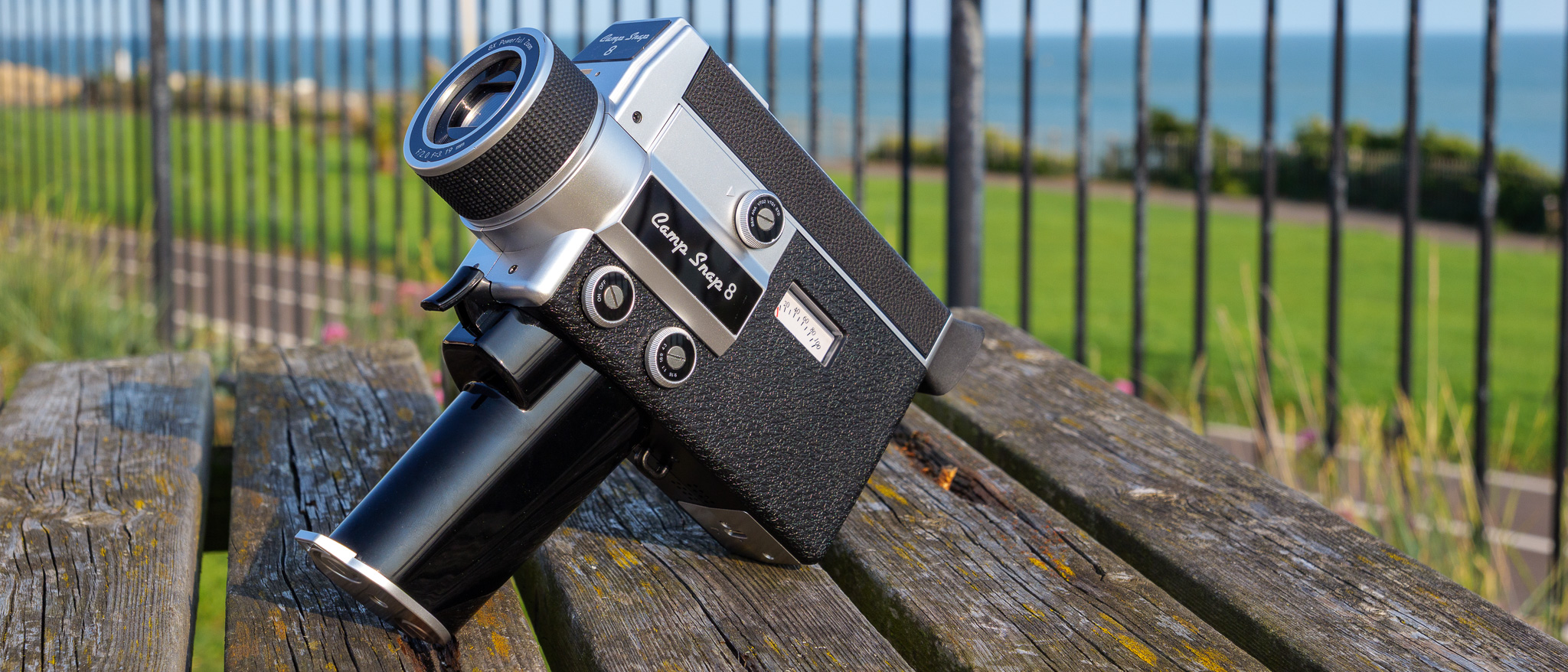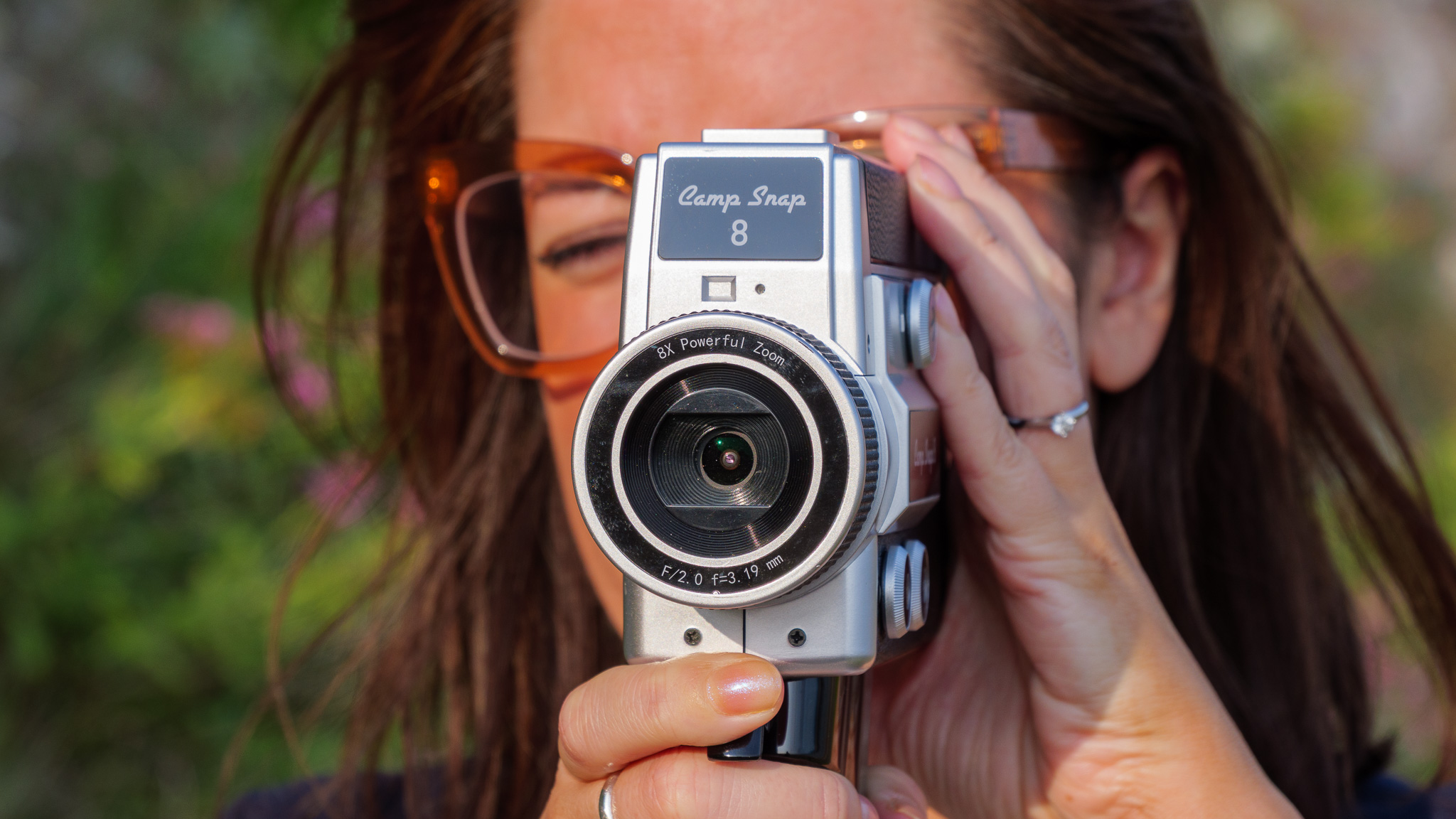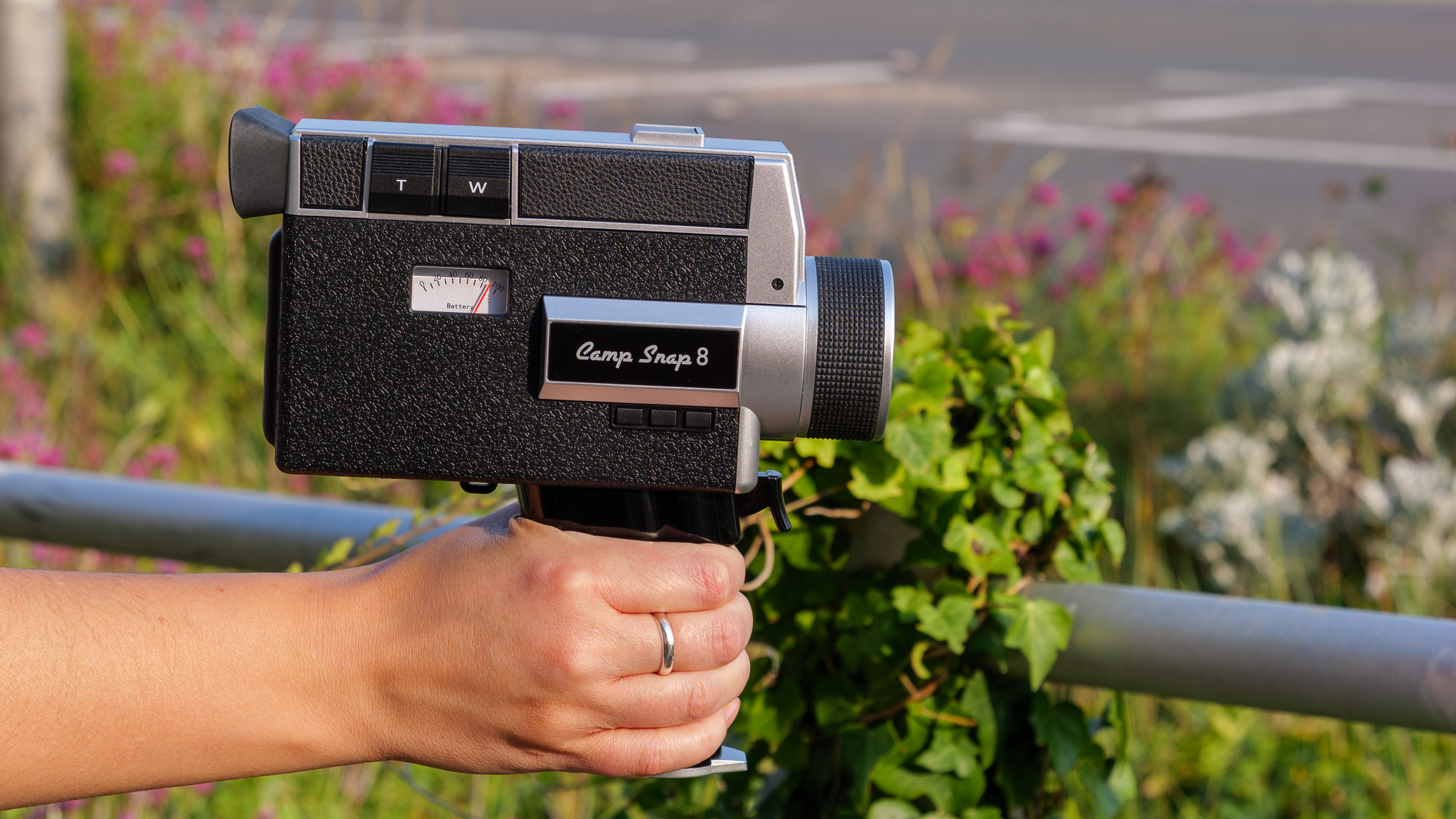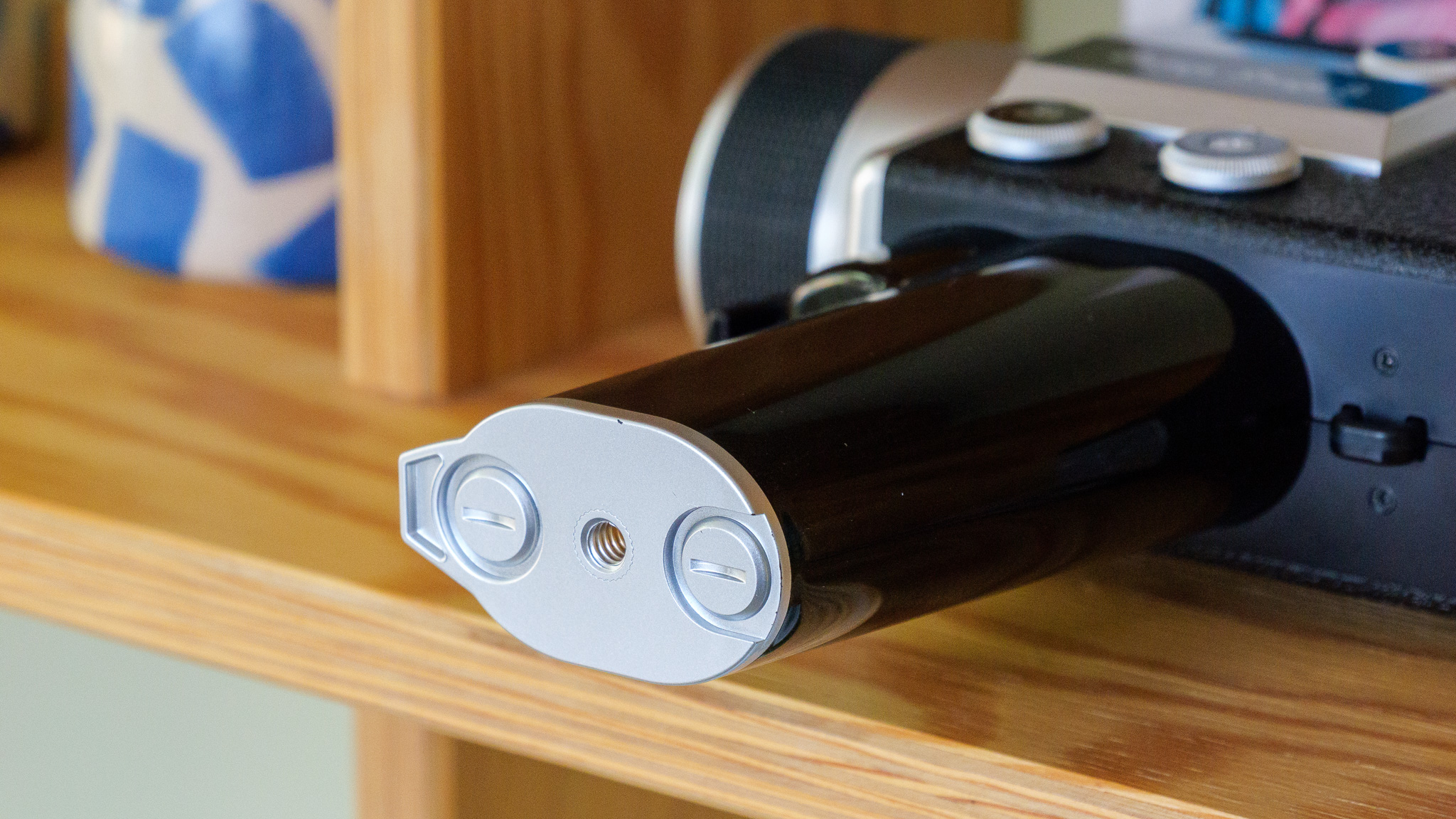TechRadar Verdict
Is the CS-8 a “good” camcorder by modern standards? Not really – you’ll get much crisper, smoother and easier to share footage from a mid-range smartphone. But that’s missing the point entirely. This is a simple, affordable retro-styled camcorder that’s big on the more subjective aspects of videography – stuff like fun, vibes and living in the moment. If you can work around – or even better, wholeheartedly embrace – its quirks and limitations, you’ll find it a welcome breath of fresh air in an increasingly spec-chasing marketplace.
Pros
- +
Super stripped-back operation
- +
Long battery life
- +
Easily expandable storage
Cons
- -
Super stripped-back operation
- -
Viewfinder hard to use for glasses wearers
- -
Trigger noise audible in clips
Why you can trust TechRadar
Camp Snap CS-8 review: two-minute review
Released back in 2023, the original Camp Snap camera has quickly established itself as a minor cult classic. While I wouldn’t call it one of the best compact cameras around, this ultra-affordable, ultra-simple and ultra-pocketable screen-free snapper is a refreshing return to photography’s old-school principles: just point, shoot and look at the results at some point in the future.
Now, with the new Camp Snap CS-8, the company has brought that same ethos to video. Styled after the Super 8 film cameras of the 1960s, complete with vintage textured plastic, pistol-grip operation, knurled dials and analogue meters to show remaining battery life and storage space, the CS-8 is a retro camcorder for a generation bored of using smartphones for all their video needs.
The CS-8 is large and chunky, and felt reassuringly weighty in my hand. I’m not in love with the abundance of plastic here – despite the classic looks, there’s very little of the metal you’d find in a genuine original Super 8 camera – but I get it.
This is an ultra-affordable modern simulacrum of a vintage camera rather than the painstaking recreation provided by Kodak’s own 2024-released Super 8 (price tag: north of $5,000), and it’s awash with obvious fakery: there are imitation screws on the base of the handle, a dummy cold shoe on top and, despite the rubbery grip wrapped around its barrel, there’s no way to actually adjust the lens. I can live with all that, as I don’t expect it to be a “real” 8mm camera – just to look like one from a distance.
Distractions are minimal; with no screen and an electronic viewfinder designed only for shot composition, there’s no way to review (or even delete) your footage until you offload it to a computer. There are very few settings to fiddle with, either: one dial picks your preferred aspect ratio (4:3, 16:9, 1:1 or 9:16), one your film look (standard, B&W, analogue or one of two vintage filters) and… that’s it, basically.
When the CS-8 is powered on, the rubber-cupped viewfinder shows a live view, formatted to match the current aspect ratio, plus the amount of battery life remaining and the current film look. To record a video, you simply point the camera at a subject and squeeze the trigger – there’s no need to focus, although you can use the “W” and “T” buttons to zoom in and out. Just like on a real 8mm camera, you need to keep the trigger pulled the entire time you’re filming; releasing it stops the capture immediately.
While reviewing the CS-8, I realised that it makes filming a much more conscious act than when I’m using my phone, or even a compact camera. Because there’s no screen and no pressure to immediately check on the footage after it’s been recorded, I can concentrate on recording a clip, and then move on. There’s no need to fret about what I’ve recorded until I get home, or until the SD card is full (which takes a while, as there’s enough space here to hold about 30 minutes of video – and by loosening two screws and pulling off a panel, you can replace the supplied 4GB card with one up to 128GB in capacity, giving you room enough for around 16 hours of video).
Sign up for breaking news, reviews, opinion, top tech deals, and more.
The footage itself is quite high-resolution, but not high-quality. There’s no stabilization, using the digital zoom degrades detail quickly and sound is monoaural. This suits the camera perfectly, I think; in fact, my favorite look by far is the Super 8-mimicking Analogue, which reduces the frame rate to 20fps (it’s 30fps on all the other modes) and adds fake scratches and artefacts to the image. The resulting imperfect, jerky video is charmingly odd, while the other modes are a little flat and boring.
If I want pristine, stabilized video, I’ll use my iPhone or a mirrorless camera. What I want from the CS-8 is something different, weird and striking – and with the Analogue setting, at least, I’m getting just that. It’s not “good” video, no, but good video is not the point.
I also think the camera is ideal for kids, being incredibly simple to operate, robustly built and cheap enough that it doesn’t matter too much if it gets damaged. In my experience, youngsters weaned on smartphone photography expect to be able to look at what they’ve just filmed right away – and might find the idea of waiting hours or even days to see their footage utterly baffling. Maybe the CS-8 could be a perfect way to teach them a bit of good old-fashioned patience?
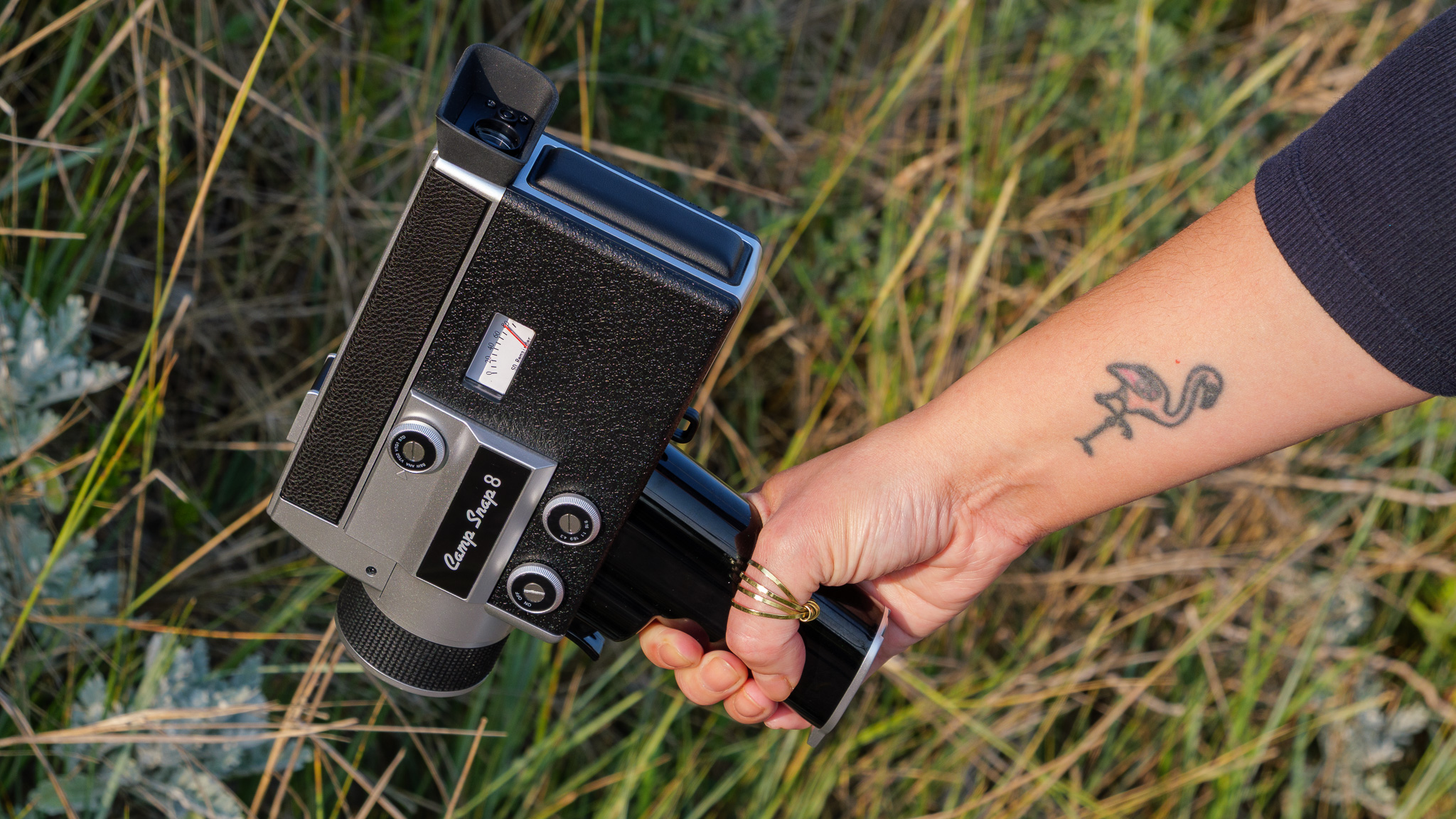
I don’t like everything about the camera, though. The microphone picks up the noise of the trigger being pulled in almost every shot, which is one bit of jankiness I found far less charming than the rest. The viewfinder is also a real pain to use if, like me, you wear glasses; even pressed right up against the cup I could only see about half of it, which I found annoying when trying to compose shots or even scope out remaining battery life.
Still, I view the Camp Snap CS-8 more as a fun alternative to a smartphone than a camcorder I’d use every day. It’s great for holidays, road trips, parties and the like – pass it round and let everyone have a turn filming, then edit all the clips together when you get home and share the results. As a piece of cheap, nostalgia-fuelled fun, it’s hard to beat.
Camp Snap CS-8: price and availability
At the time of writing, the CS-8 is currently available for pre-order, with shipments due to go out “by mid-September” 2025.
The camera is priced at $199 / £152, but those who do order ahead of the launch date can take advantage of 25% introductory discount, making the price a very reasonable $149 / £114.
In the box you get the camera itself, a pre-installed 4GB microSD card and a USB-C to USB-C cable for charging and data transfer. It would have been nice to include a strap or lanyard, but you either buy Camp Snap’s own wrist strap/USB-C cable or add any strap of your own.
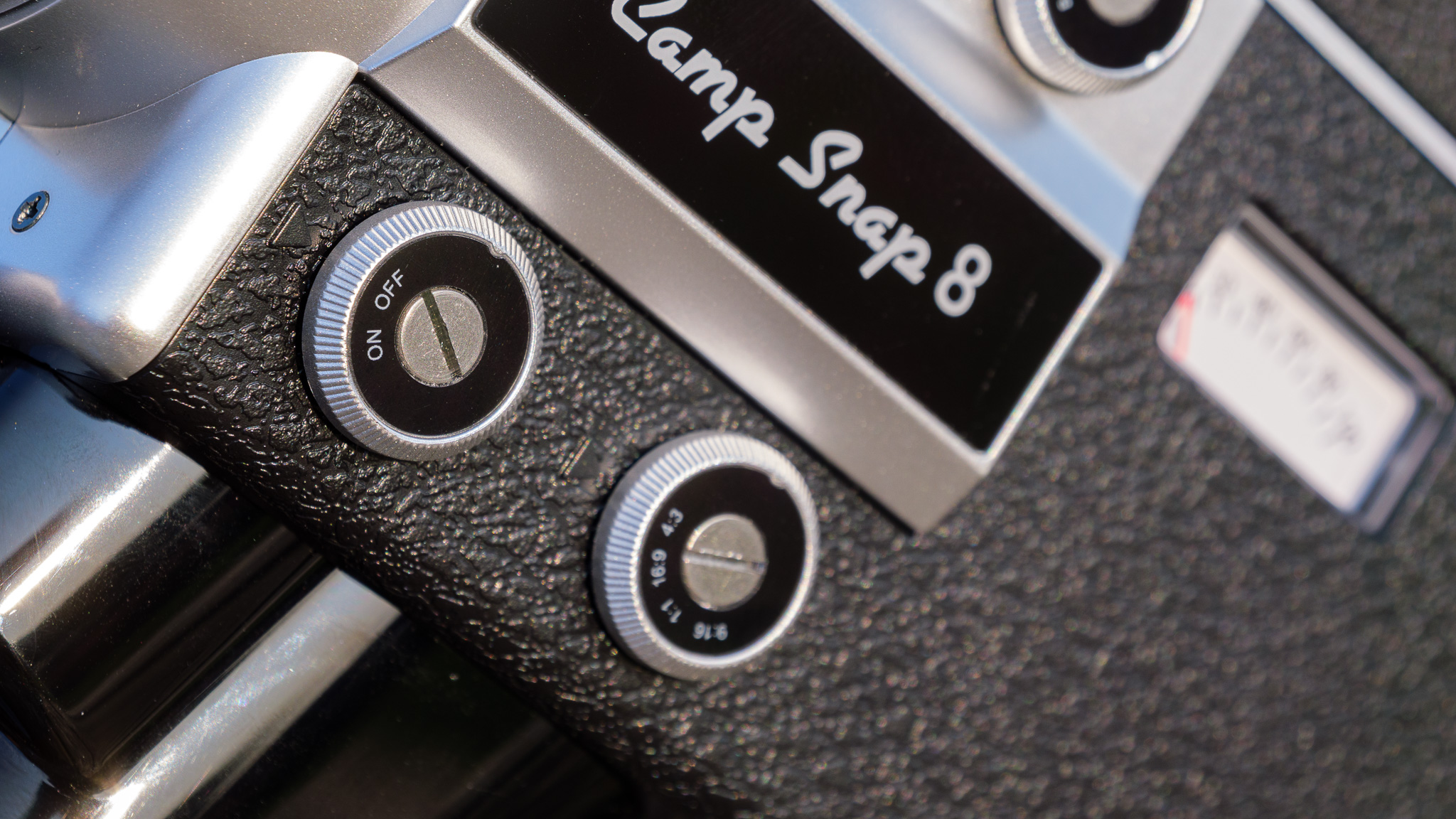
Camp Snap CS-8 review: specs
Video | Up to 2880 x 2144 30fps |
Audio | Mono only |
Aperture | f/2.0 |
Zoom | 8x digital |
Focus | 0.3m-infinity |
Storage | 4GB microSD card (replaceable) |
Stills | N/A |
Connectivity | USB-C |
Battery life | 30 minutes (approx.) |
Dimensions | 200 x 58 x 203mm / 7.9 x 2.3 x 8in (approx.) |
Weight | 519g / 18.5oz |
Should I buy the Camp Snap CS-8?
Buy it if...
You want an ultra-simple video camera
About as point-and-shoot as video gets, these days – and there’s no even a screen to distract you from the act of filming.
You’re a fiend for nostalgia
If you’re on your fourth binge-watch of Mad Men, the CS-8’s 1960s flair and its vintage video look might well appeal to your mid-century aesthetic sensibilities.
You want a kid-friendly camcorder
Cheap, sturdy and simple to use, the CS-8 is ideal for young kids. As long as they don't mind waiting to review their footage.
Don’t buy it if…
You’re expecting pristine audiovisual quality
With tinny sound and grainy video, the CS-8’s home movie clips are much more 1960s than 2020s. That’s kind of what you’re paying for, really – but inveterate pixel peepers need not apply.
You’re a spectacles wearer
If your glasses are, like mine, as thick as bottle bottoms, you might struggle with the CS-8’s restrictive viewfinder. It’s not a deal-breaker for me, but it is an annoying design quirk.
You want pocket-sized portability
The CS-8 is a very chunky camera by today's standards, and isn't fitting in anything but the largest of coat pockets.
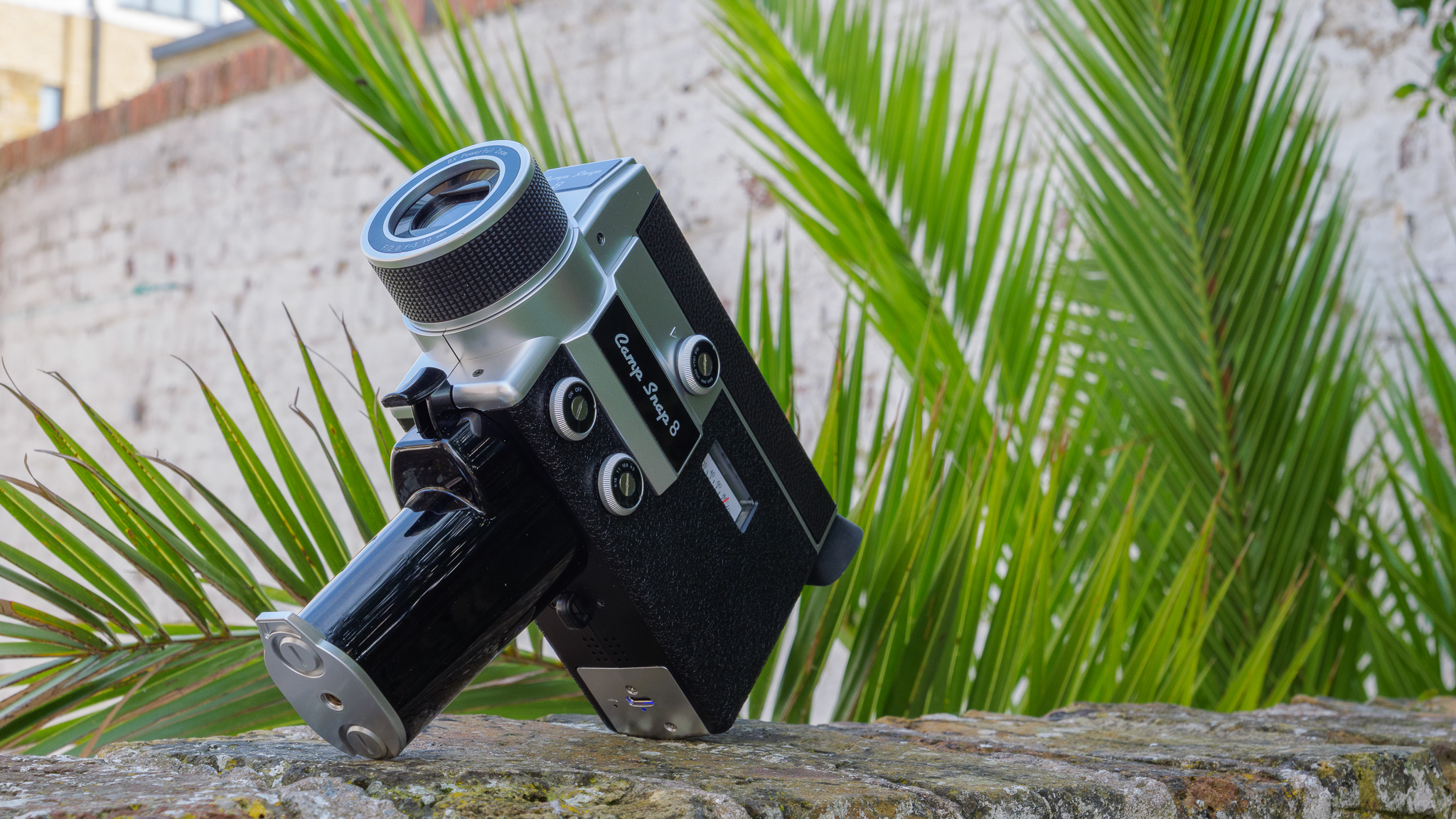
How I tested the Camp Snap CS-8
- Three weeks of regular use
- Filmed video using all settings and looks
- Edited videos together using DaVinci Resolve
I was sent an early, pre-release review sample of the CS-8 from the initial batch of models off the production line, and had plenty of time to live with and test the camera in a variety of real-world scenarios: family get-togethers, coastal walks and inside my home, both day and night.
The camera is light on options, but I tested all the aspect ratios and looks (or filters), before exporting the video files to my laptop and editing them together into the sample video you see above using DaVinci Resolve. I didn’t color grade, correct or adjust any of the files, though – just used the editor to trim and stitch them together.

Sam has been writing about tech and digital culture for over 20 years, starting off in video games journalism before branching out into the wonderful worlds of consumer electronics, streaming entertainment and photography. Over the years he has written for Wired, Stuff, GQ, T3, Trusted Reviews and PC Zone, and now lives on the Kent coast in the UK – the ideal place for a camera reviewer to ply their trade.
You must confirm your public display name before commenting
Please logout and then login again, you will then be prompted to enter your display name.
